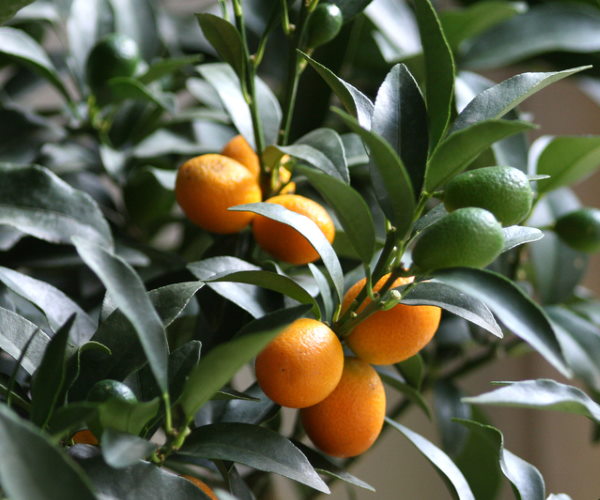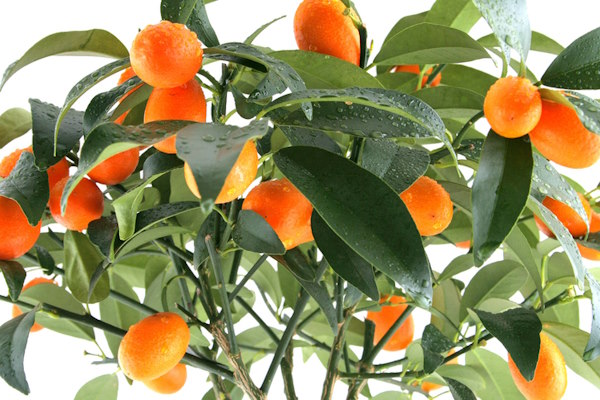Grow Kumquat Tree Indoors
Tiny, bright orange kumquats hang like ornaments on the kumquat tree, making it a beautiful -- and fragrant -- house plant.

Get to Know Your Kumquat Tree
Glossy green leaves cover the woody stems of this dwarf citrus tree. How big does it get? Dwarf trees grow up to 10 ft (3 m). Keep Fortunella margarita at a height of 3-4 ft (90 cm - 1.2 m).
You can expect an abundance of scented, delicate white flowers to appear on the branches in spring and summer.
Those fragrant blooms are followed by 1-2 in (2.5-5 cm) kumquat fruits, changing from green to bright orange as they ripen. Unlike many orange trees that ripen at once, kumquats ripen over a few months in winter.
You'll usually see flowers and fruits at the same time, making kumquat tree a fresh, colorful accent for a sunny room.
Known botanically as Fortunella spp., this citrus tree has origins in China.
Nagami kumquat is the most common, featuring oval fruits (pictured here). You can eat them whole -- peel and all. Kumquats are more tart than your average orange. Sample one for sourness before using any in cooking. I've heard they do make delicious marmalade.

Prune your plant back in early spring to keep it small. Cut at a 45° angle just above a leaf node (where a leaf attaches to a stem). Cuts made here will encourage branching, giving you a fuller, more attractive tree.
Repot a young plant only when it's crowded in its pot. This citrus tree blooms best when its roots are confined in a smallish container. Use a pot that's about 6 in (15 cm) in diameter until plants are 3 or 4 years old, then move up to an 8 in (20 cm) container. Always use a pot with a drainage hole to prevent root rot.
Pollinate your plant. Kumquat trees that are grown indoors may need to be hand-pollinated to trigger fruit production. It's easy to do. Just take a small, dry paintbrush and wiggle it around the center of each flower, moving from flower to flower. This carries the pollen from male to female flowers, just like bees do it.
Buying a kumquat tree? Buy a grafted plant from a reputable grower. Citrus trees that are grown from seed aren't reliable to bear fruit.
 Photo credit: Kazina
Photo credit: KazinaKumquat Tree Care Tips
Light: Kumquat trees need as much direct sun as possible to produce flowers and fruit. Give it a quarter turn every week to expose each side to sunlight. You can move it outdoors during the warm months to give it a boost.
Water: Water thoroughly, allowing the surface of the soil to dry between waterings.
Humidity: Try to maintain at least 40% relative humidity around your plant. Use a cool-mist room humidifier near the plant.
Temperature: Average room temperatures 65-75°F/18-24°C are ideal year-round. This citrus tree will tolerate a minimum of 50°F/10°C in winter.
Soil: Slightly acidic medium, such as organic potting mix specially made for fruit trees.
Fertilizer: I highly recommend using an organic fruit tree fertilizer. It contains all the nutrients citrus trees need for healthy root growth and promotes flowers and fruits.
Propagation: Take stem cuttings in early summer. With a sharp knife or razor blade, take 4 in (10 cm) stem tip cuttings with at least 2-3 leaf nodes without flowers or fruit. Dip cut end in hormone rooting powder before inserting in moist potting mix, then enclose in a plastic bag to maintain humidity. Stem cuttings will root in about 6-8 weeks.


